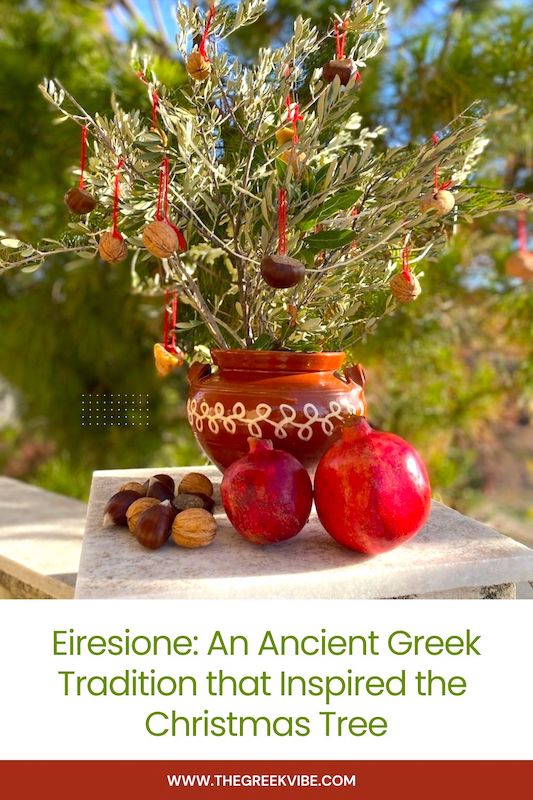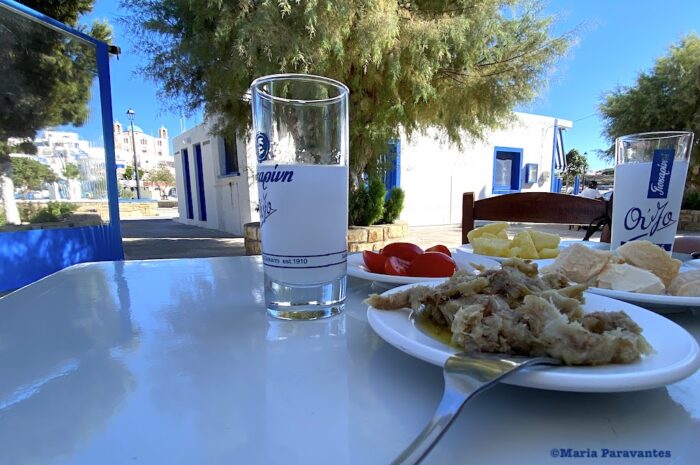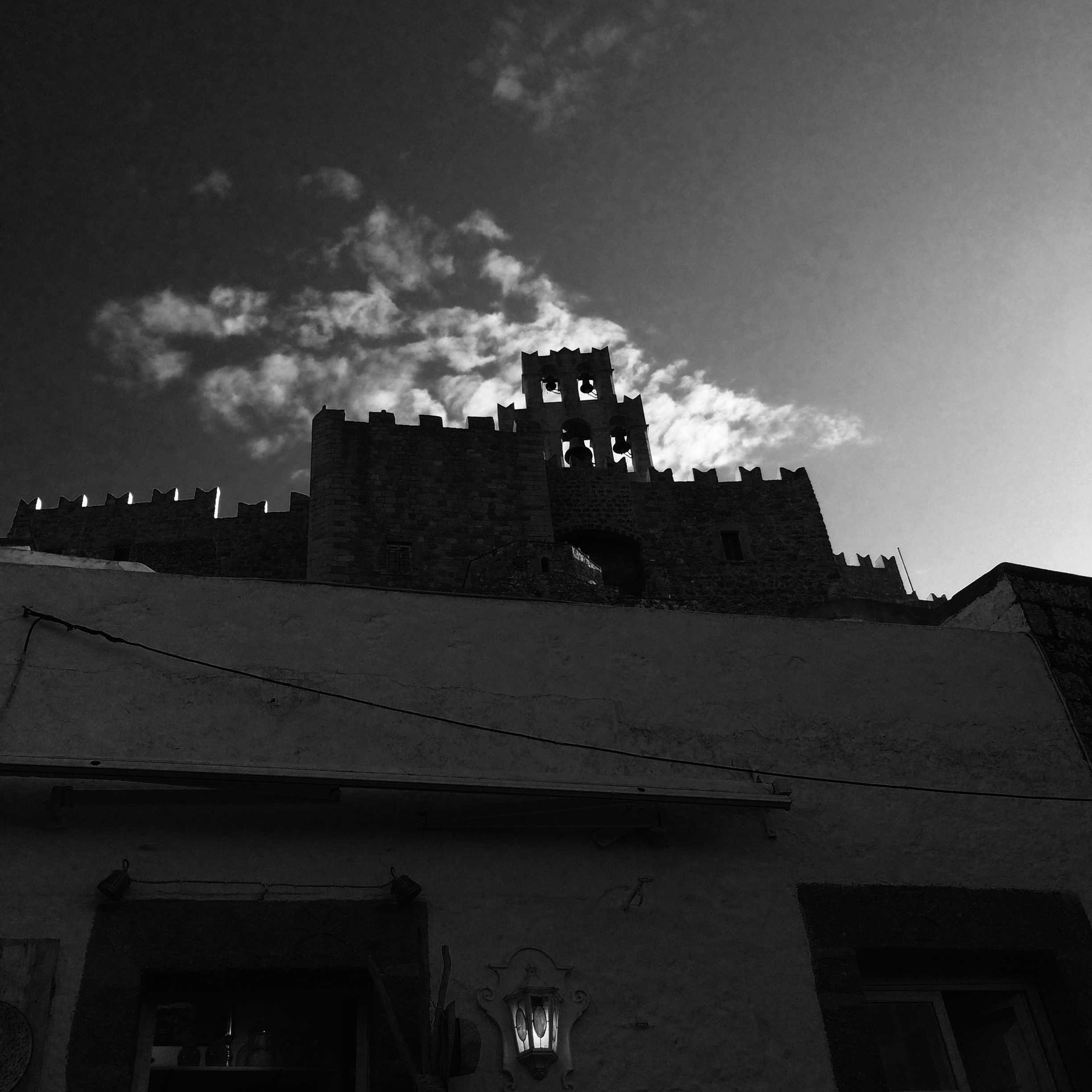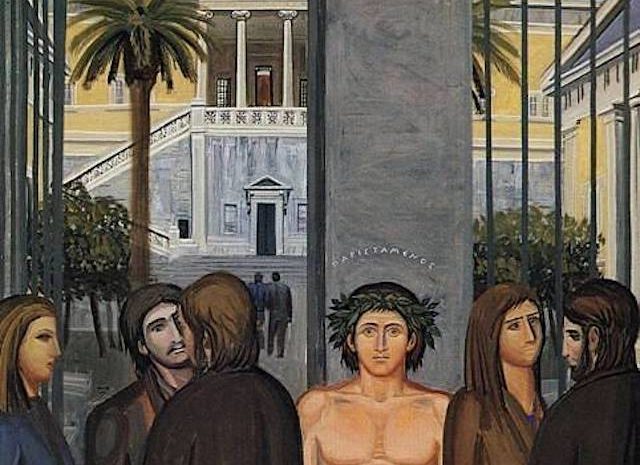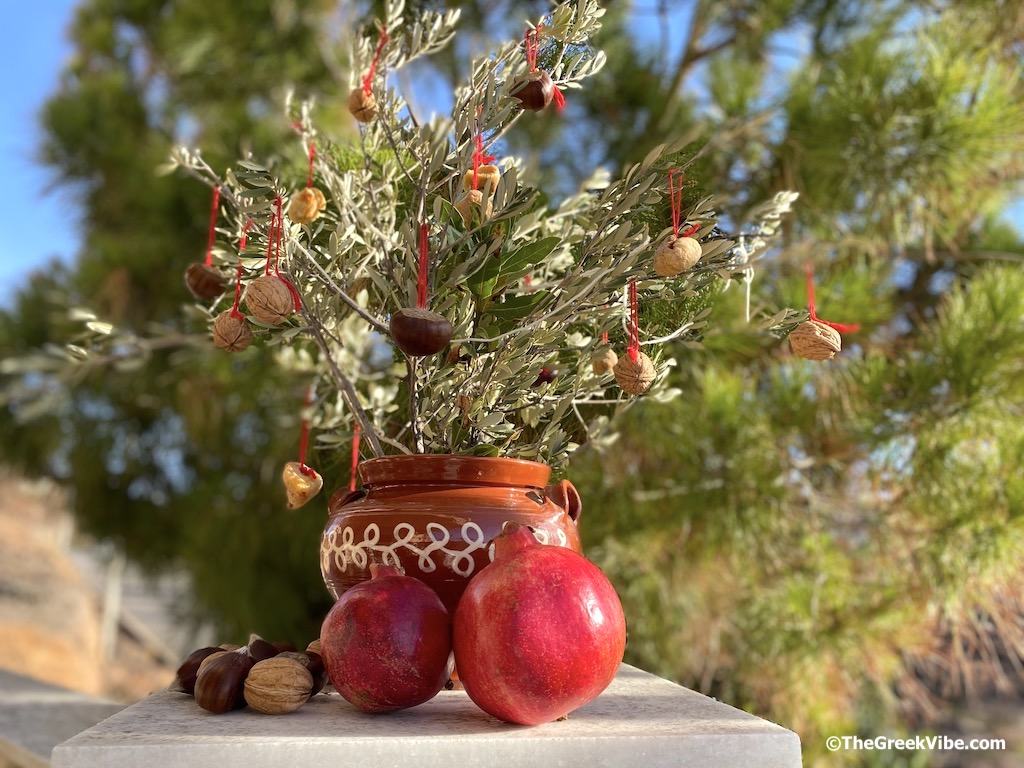
So what is the origin of the Christmas tree? Many of us have often wondered and each culture and nation has its own very interesting tale to tell. Here in Greece, before the Christmas tree, we decorated boats – the “karavaki”. We still do today. The Greek Christmas boat is very much linked to our centuries-old seafaring tradition. But did you know that the Ancient Greeks decorated trees too? Not to celebrate Christ’s birth of course; that came much later, but to honor the Greek gods and peace. The name of this tree, which many believe to be the predecessor of the Christmas tree we all love and know, is the “Eiresione”.
The word “Eiresione” derives from the ancient Greek word “eiros-eirion” which means lamb wool. What?
►Kallikantzari: The Greek Trolls of Christmas
Eiresione: Much More than a Christmas Branch
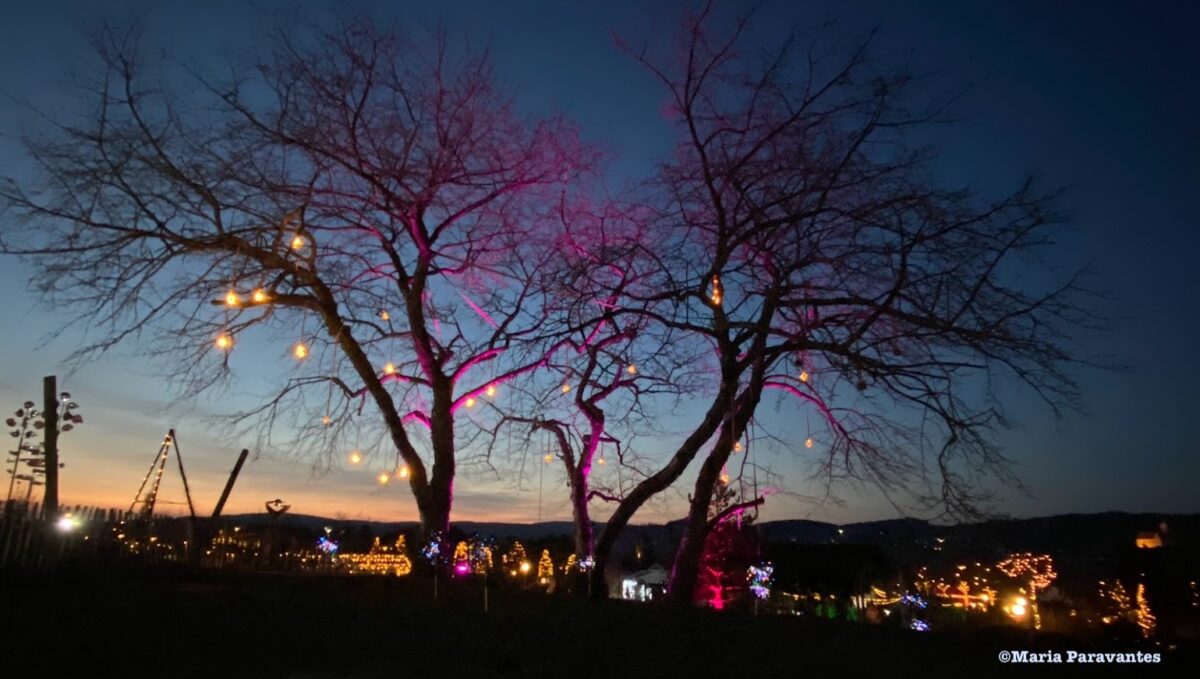
So how was the ancient Greek “eiresione” tree decorated? For us today decorating is so easy. We pop into a store and find hundreds of ornaments and lights of all sizes, shapes, and colors but can you imagine what it was like thousands of years ago? Because that’s how old the Eiresione is.
To begin with, the ancient Greeks chose to decorate a tree, or should I say a branch from trees that were easily found around them: this was either an olive tree or a laurel tree – both very common in Greece to this day.
👉🏼 Dream of visiting Greece? Start planning
As for tree ornaments, the ancient Greeks turned to Mother Nature for inspiration: dried fruit of the season like figs, all sorts of grains and nuts like walnuts, almonds, chestnuts, and even tiny flasks full of wine, olive oil and honey: the gifts of nature we are still very grateful for today and which are traditional Greek symbols of abundance.
►Koliva: The Symbolism of a Greek Delicacy Made for the Dead
Researchers also say the ancient Greeks added two sphere-shaped ornaments symbolizing the sun and the moon.
So where does the “wool” come in? “Eiresione” was named after the wool – white and sometimes dyed red – that was used as a garland for the tree branch much like we today decorate our trees with shiny tinsel.
And there you have it! The Ancient Greek “Christmas” tree or what some claim to be the inspiration behind the world’s first Christmas tree!
The Eiresione and the Greek Kalanta Tradition
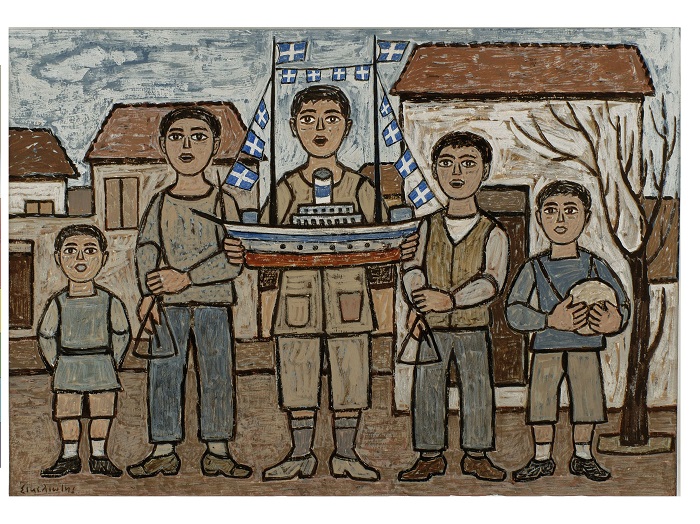
There are several theories about the history of the Eiresione. Some say Ancient Greek hero Theseus vowed to honor the god Apollo for his support before his fight with the mighty Minotaur. It is said that after killing the Minotaur on Crete, Theseus created the “Pyanopsia” an ancient Athenian festival to thank Apollo.
During the yearly festival which took place in Athens, young boys would go around singing carols (“kalend”) with Eiresione branches in hand, which they would later hang over the Temple of Apollo in Athens and on the front doors of their homes. The branch was said to bring good fortune, and when the year was over, it would be doused in wine and burned, only to be replaced by a new Eiresione the year after.
►Greek Carols for the New Year – The Kalanta Tradition
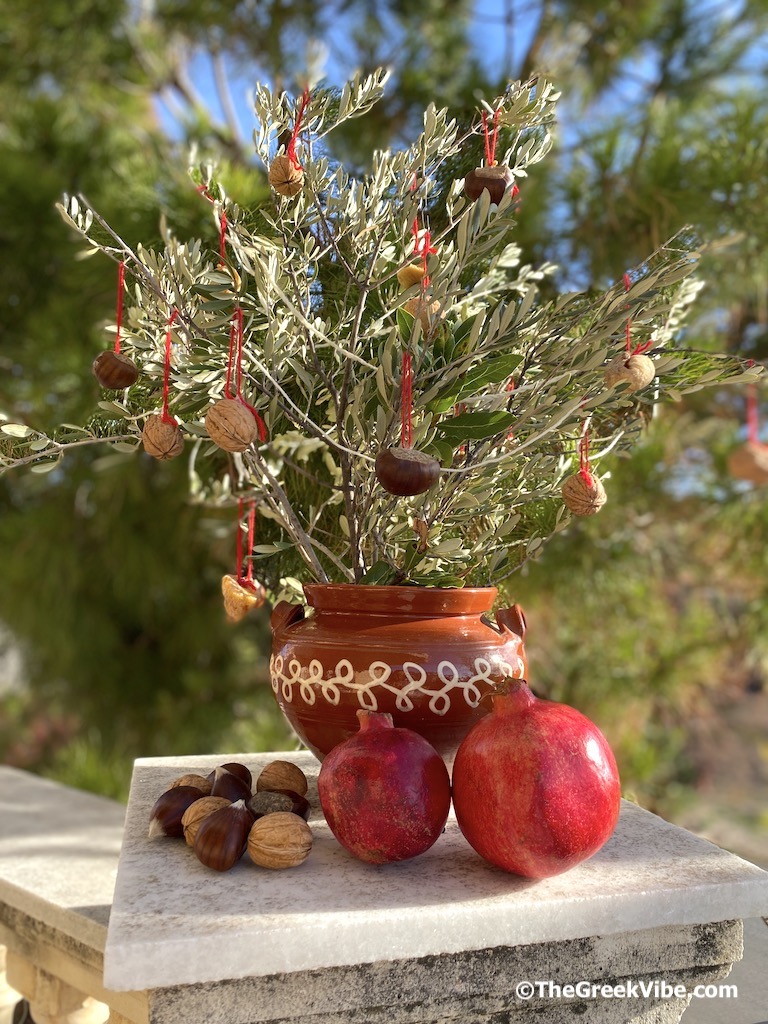
In modern times and up to the late 1970s, Greek children would sing the “kalanta” from door to door carrying instead of an eiresione a “karavaki” Christmas boat, and nowadays a musical triangle. Today, above our doors as a sign of abundance we place a pomegranate.
According to ancient Greek historian and philosopher Plutarch (AD 46 – after AD 119), the “kalend” carols were very similar to today’s “kalanta” wishing wealth, health and abundance.
“Eiresione brings figs and fluffy breads,
honey in pots and oil to anoint the limbs,
Strong wine too in a beaker, that one may go to bed mellow.”
Myth has it that as an old man, ancient Greek poet Homer (the man who authored the Odyssey and the Iliad), would go around singing the Eirisione carols with the children.
Whether olive branch – which was the sacred tree of Athena the goddess of wisdom – or laurel branch which were both symbols of victory in ancient Greece, the “eiresione” symbolized gratitude and abundance.
👉🏼 Find the best hotel deals for you
Let’s not forget that it was Athena who planted the first olive tree in Athens competing for the city with Poseidon, the god of the sea.
Why Did the Greek Eiresione Custom Stop
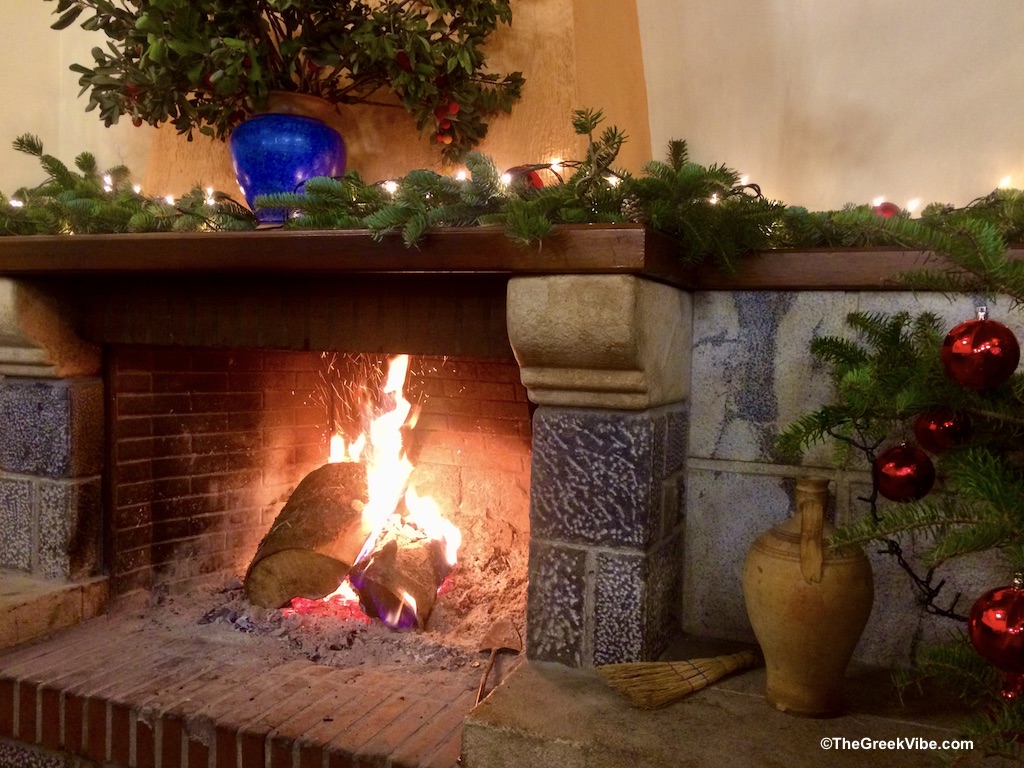
As times changed and with the coming of Christianity, the tradition was considered pagan and shunned by Byzantine leaders (330-1453).
Legend (or history) has it, that the Eiresione was finally accepted and the custom passed on by Greek sailors and tradesmen to other European countries up North. Instead of olive trees, they decorated trees popular in their homelands.
► A Pomegranate Full of Wishes for Greek New Year
It was centuries later that the Christmas tree as we know it today as an evergreen conifer fir, pine or spruce, reached Greece through Bavarian King Otto who ruled the country from 1832 to 1862.
The first Christmas tree in Greece, an evergreen, was actually decorated in the seaside town of Naflpio in 1833. Nafplio was Greece’s first capital from 1827 to 1834 before Athens and this is where Otto resided in the Governor’s Mansion known as the “palataki” (small palace).
The traditional Christmas tree made its way into Greek homes much later, in the late 1950s and 1960s replacing for many decades the traditional “karavaki”.
♫ I end today’s post with one of our New Year’s carols – kalanta – from the island of Chios titled “Kalisperizo Fernontas” with lyrics similar to the “Eiresione” wishes of abundance interpreted here by a group of young performers Bracera.
❤️Follow The Greek Vibe on TikTok too!
Enjoyed this Post? Share and Pin it!
